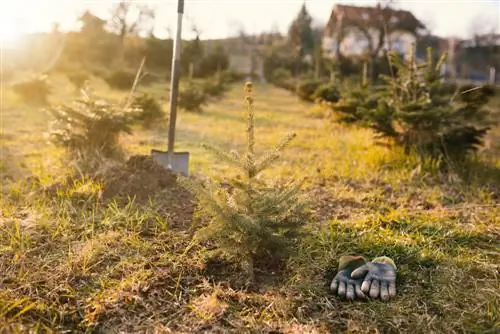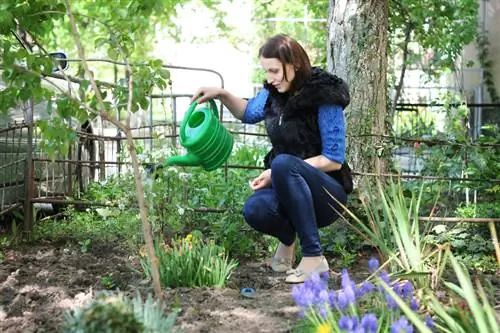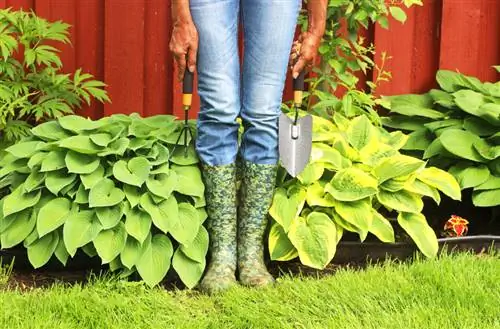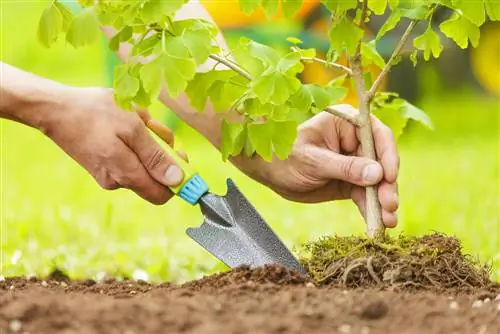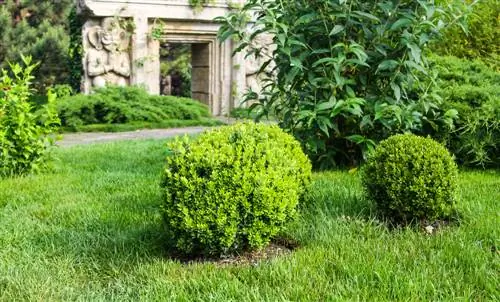- Author admin [email protected].
- Public 2023-12-16 16:46.
- Last modified 2025-01-23 11:22.
Sometimes a Nordmann fir should or has to change its location. However, transplanting trees is a risk whose good outcome is not always certain. Once the spade is planted, there is no turning back. Therefore, weighing up the opportunities and risks beforehand is essential.
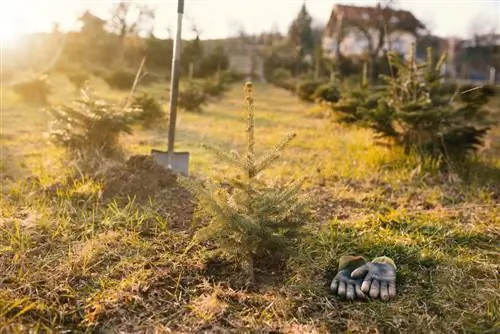
How should you successfully transplant a Nordmann fir?
When transplanting a Nordmann fir, you should choose young trees up to around 1.6 m high, transplant them in spring and place the tree in a sunny to partially shaded location. Avoid root damage, maintain sufficient planting distance and water regularly after transplanting.
Only young trees are handy
Nordmann firs form long taproots, which they supplement with plenty of lateral roots in later years. This makes this type of fir extremely storm-proof. However, the deep root system makes it difficult to dig up the fir tree without damaging the roots.
Before transplanting, you should ask whether careful digging is even possible. The larger a Nordmann fir, the higher the risk of injuring its taproot. This will no longer recover or grow back. Trees up to about 1.6 m high are considered easy to transplant in practice.
Tip
If a Nordmann fir has become too large for its space, it does not necessarily have to be felled or replanted. Cutting off the tip is also a way to keep it in its old location.
Be careful with Christmas trees
The Nordmann fir is a popular Christmas tree. So that it lasts longer in the living room, it is often offered in a pot. Even if the fir appears intact on the outside, its long roots may be cut for space reasons. A Nordmann fir with a shortened taproot has no chance of surviving being transplanted into the garden. So before you plan to transplant, check the condition of the root system first.
Christmas trees that are suitable for transplanting must first be gradually acclimated from warm living room temperatures to the cold outside.
Spring is the best season for transplanting
If you decide to transplant any Nordmann fir variety, you should wait until the best time has come. This will make it much easier for her to take root, which will make a decisive contribution to the success or failure of the project. Don't start spading until spring, when the growing season is just around the corner.
Tips for transplanting
- pay attention to the ideal, sunny to semi-shady location
- Measure the roots and then dig a slightly deeper hole
- Make sure there is enough planting distance from other trees
- do not insert it deeper than the tree was previously
- fertilize with fir fertilizer
- water regularly for weeks after transplanting
- if applicable. with a support post to ensure stable support and straight alignment

